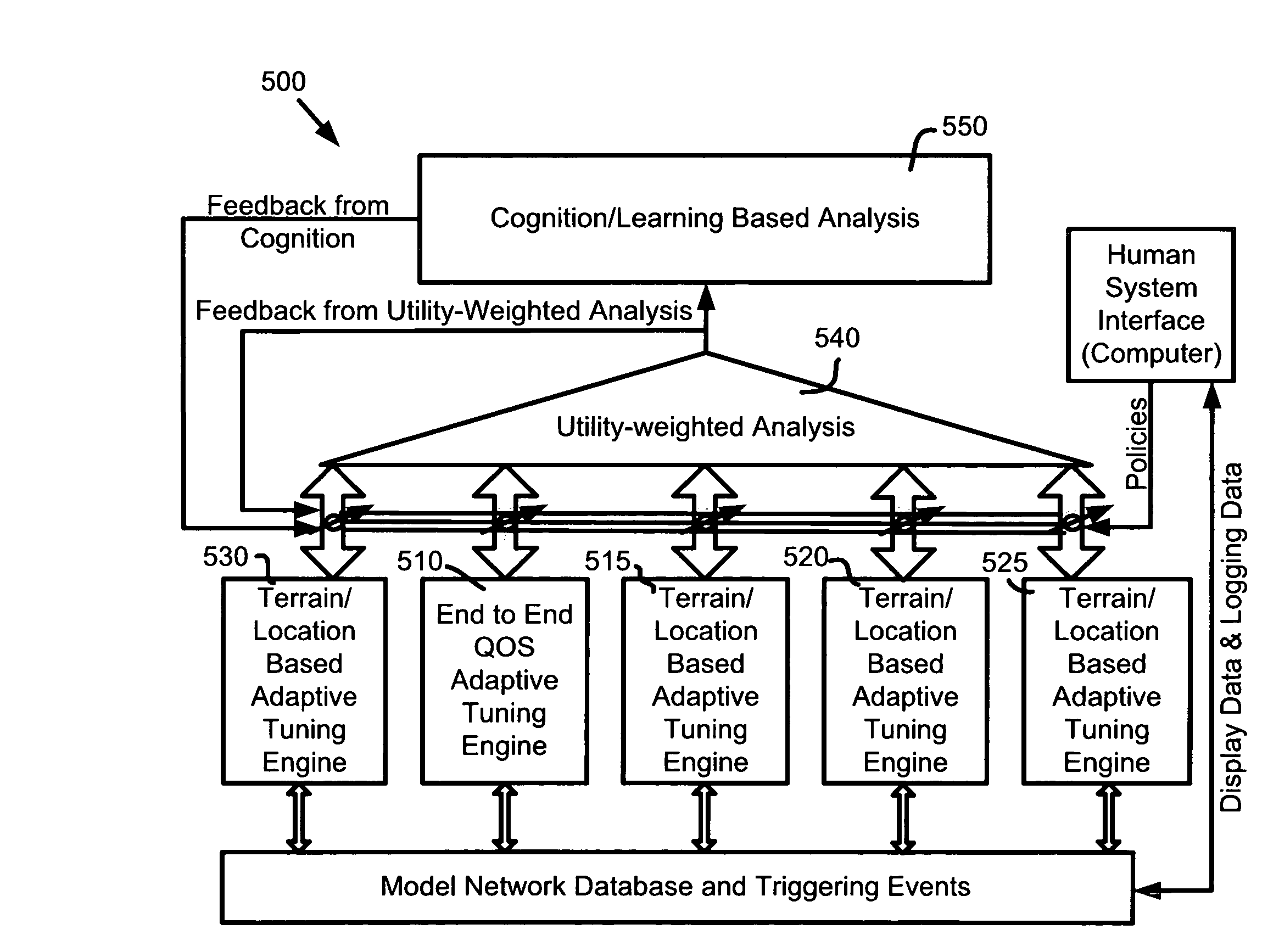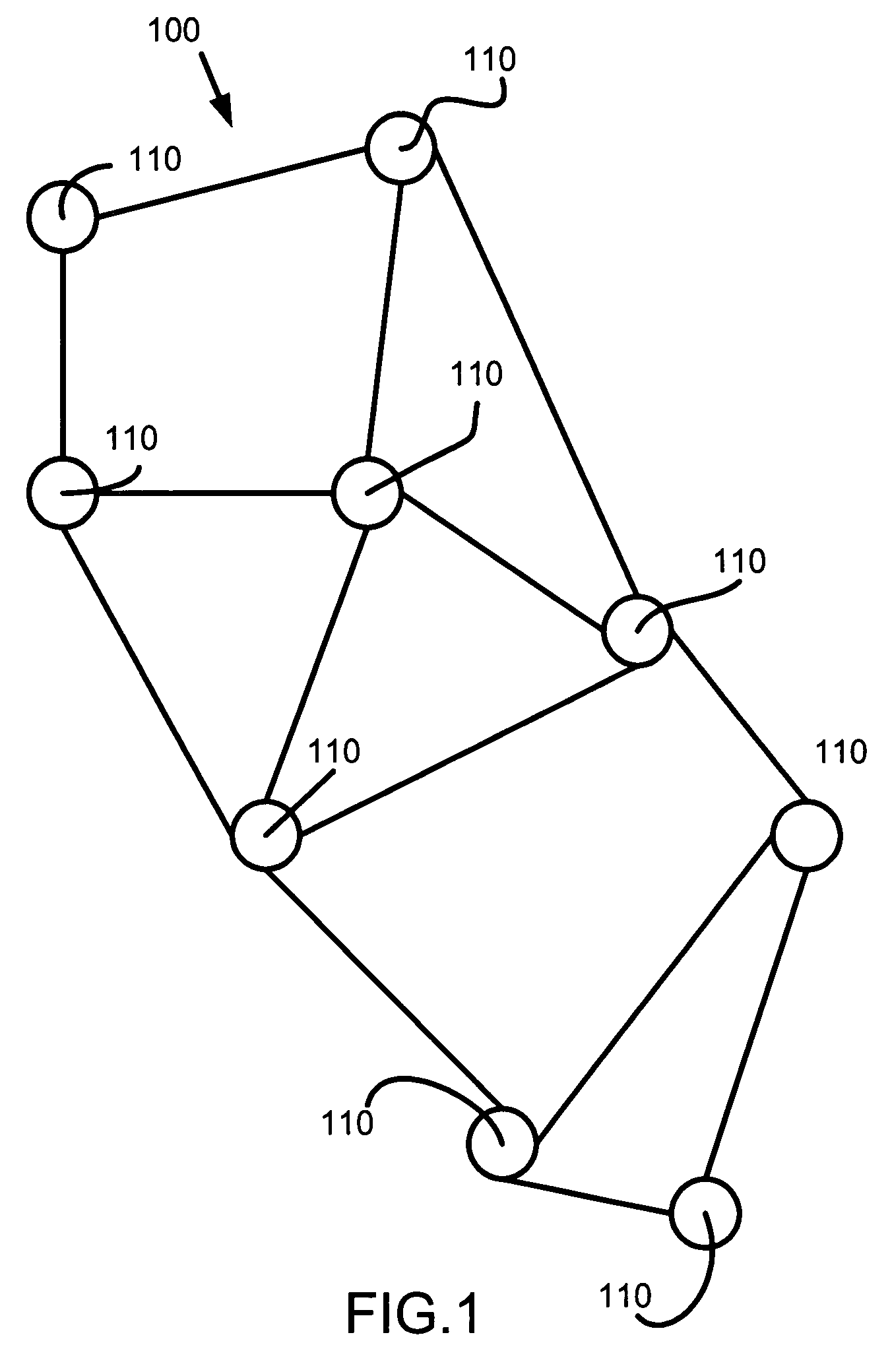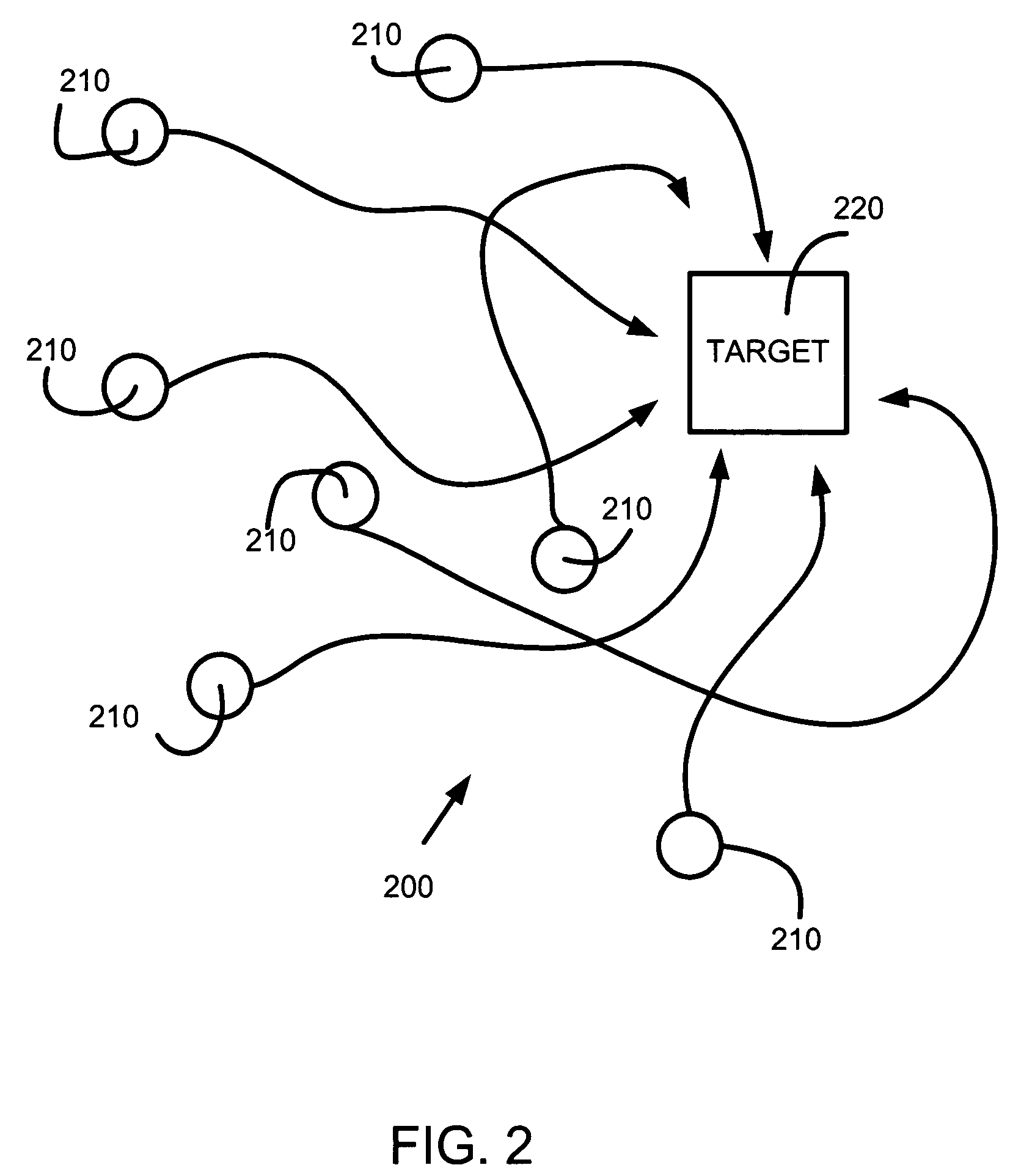Cognitive adaptive network management areas
a network management and cognitive technology, applied in the field of cognitive adaptive network management areas, can solve the problems of difficult task of ad-hoc network management, link failure, and node only having a limited view of the network, and working within the limitations of the field
- Summary
- Abstract
- Description
- Claims
- Application Information
AI Technical Summary
Benefits of technology
Problems solved by technology
Method used
Image
Examples
Embodiment Construction
[0015]Mobility in ad-hoc networked nodes causes dynamic network formation and reformations. In current literature node mobility is considered to be a random function, especially in simulations, at every instant in time. The reality is that a majority of the ad-hoc network mobility is coordinated mobility. Consider the case of a small set 200 of soldiers 210 on a reconnaissance mission, each soldier may take a different path to approach the target 220 of the reconnaissance and their individual paths may seem random if it is viewed independently but if it is viewed as a group or sub-network, a pattern of mobility emerges. This pattern can be seen only with the eyes of a centralized ad-hoc network management entity. The reality of the reconnaissance mission is that though each of the individual nodes may encounter additional friendly nodes for network formation and reformation, the mobility of the small set of soldiers will actually cause a limited number of network reformations. A net...
PUM
 Login to View More
Login to View More Abstract
Description
Claims
Application Information
 Login to View More
Login to View More - R&D
- Intellectual Property
- Life Sciences
- Materials
- Tech Scout
- Unparalleled Data Quality
- Higher Quality Content
- 60% Fewer Hallucinations
Browse by: Latest US Patents, China's latest patents, Technical Efficacy Thesaurus, Application Domain, Technology Topic, Popular Technical Reports.
© 2025 PatSnap. All rights reserved.Legal|Privacy policy|Modern Slavery Act Transparency Statement|Sitemap|About US| Contact US: help@patsnap.com



